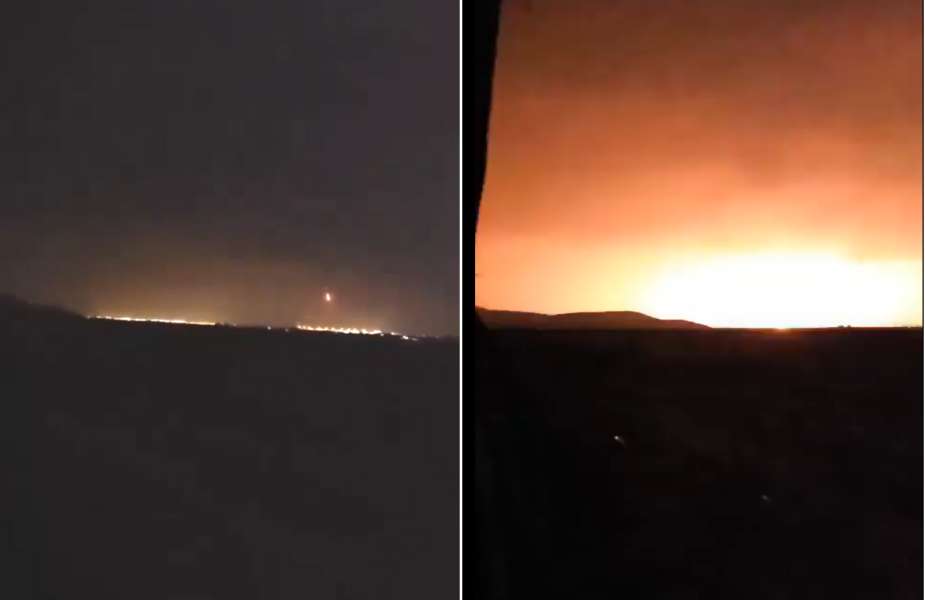Iran demonstrated a strategic shift in its military approach towards Israel, executing an attack that closely resembled the tactical compositions used by Russia in its ongoing conflicts in Ukraine, citing information published by the "Institute for the Study of War", on April 13, 2024. The Iranian offensive utilized a mix of ballistic missiles, cruise missiles, and drones, a combination that has been critical to Russia's attempts to penetrate Western air and missile defenses. This method suggests a significant transfer of strategic military thought, likely influenced by the collaborative engagements between Iran and Russia in different theaters of conflict.
Follow Army Recognition on Google News at this link

On Saturday, April 13, 2024, Iran conducted airstrikes on Israeli territory using drones and missiles. (Picture source video footage X)
The aerial attack was launched on April 13, 2024, by the Islamic Revolutionary Guards Corps (IRGC) Aerospace Force directly from Iranian territory, marking a significant escalation as it was the first direct attack on Israeli territory. The operation, named "True Promise," involved multiple waves of drones and missiles, indicating a well-planned effort to test and potentially overwhelm Israeli and allied defenses. The IRGC utilized launch sites across Kermanshah and Hormozgan provinces to dispatch hundreds of drones, including the Shahed-136 models known for their effectiveness in one-way attack missions.
Brig. Gen. Daniel Hagari of the Israel Defense Forces confirmed the scope of the attack, reporting that it included over 200 drones along with numerous cruise and ballistic missiles. The United States, United Kingdom, Israel, and Jordan coordinated efforts to intercept the incoming threats outside of Israeli airspace between 1700 and 1800 ET. Flight radar data indicated that the airspace over Iran, Israel, Jordan, Iraq, and Lebanon was subsequently closed.
Iran's strategic use of these tactics also extends beyond immediate military objectives. It reflects a broader strategy of testing and refining these approaches in various theaters, such as using Houthi attacks in the Red Sea to gauge the efficacy of drone tactics against U.S. Navy air defenses. This ongoing conflict provides critical data helping Iran to adapt and refine its capabilities to sidestep and overwhelm modern air and maritime defense systems more effectively.
Additionally, the Iranian Permanent Mission to the United Nations stated on X (formerly Twitter) that the operation was a response to an April 1, 2024, Israeli airstrike that targeted IRGC officials in Damascus, marking the operation's end at 1800 ET on the day of the attack.
Simultaneously with Iran's initial wave, members of the so-called "Axis of Resistance" conducted coordinated attacks. Lebanese Hezbollah fired dozens of Katyusha rockets at an Israeli missile and artillery base in the Golan Heights. The Houthis and the Iranian-backed Iraqi militia Faylaq al Waad al Sadiq (True Promise Corps) also issued statements and media suggestive of participation in the attacks, with the Badr Organization posting graphics indicating their support.
As the situation continued to develop, the Israeli war cabinet convened urgently in Tel Aviv to address the ongoing threats and to coordinate further defensive strategies. As the international community watches closely, the implications for regional stability and the potential for further escalation remain profound.
Defense News April 2024
















